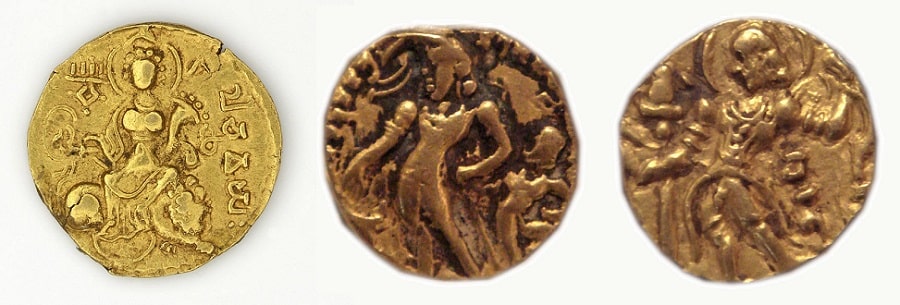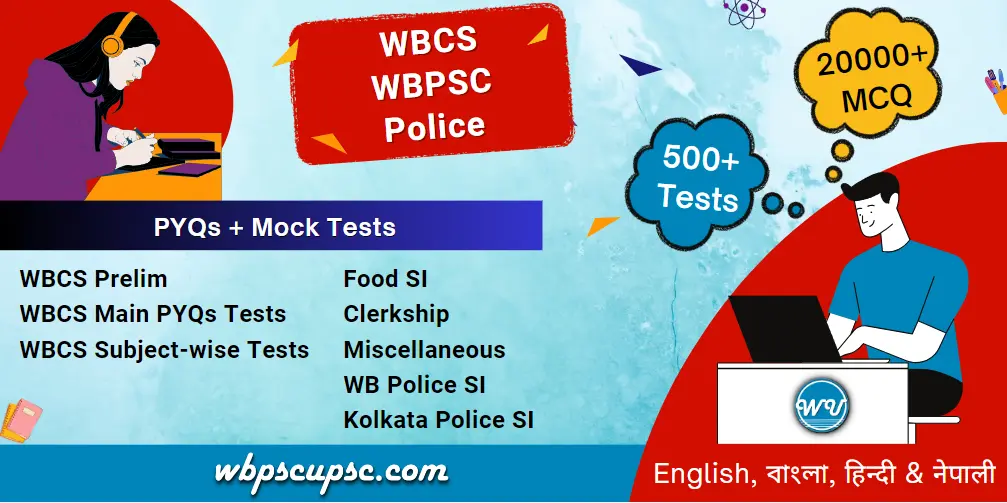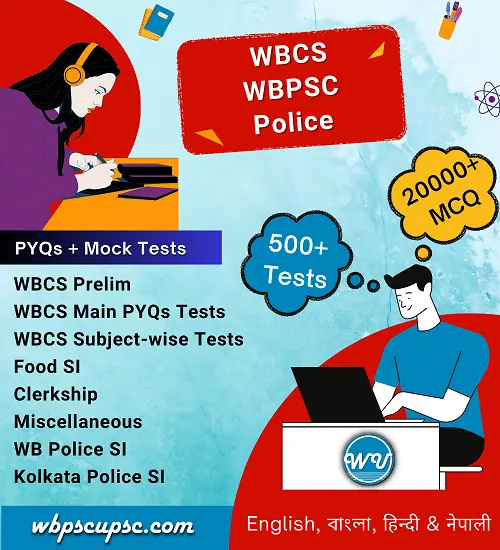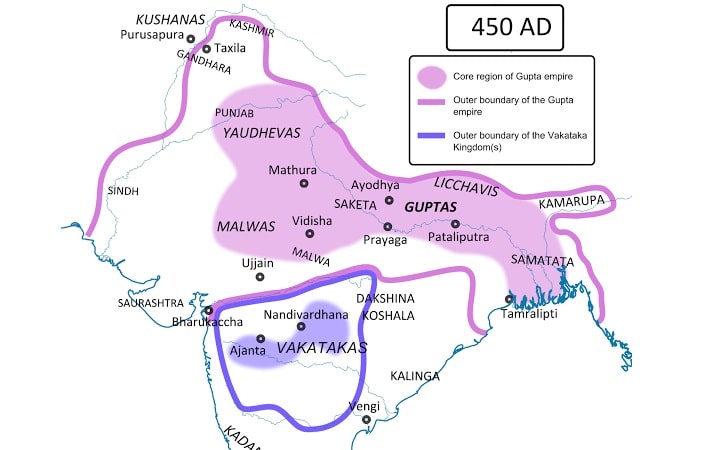March 7, 2019
Gupta Dynasty
Contents
>>>>>>
- The Gupta dynasty was kept north India politically united for more than a century.
- The original kingdom of the Gupta empire comprised Uttar Pradesh and Bihar at the end of the 3rd century A.D.
- They could exploit the iron ores of central India and south Bihar.
- Gupta dynasty took advantage of the north Indian silk trade with the Eastern Roman empire (Byzantine empire).
- With those favorable factors they set up their rule over Anuganga (the middle Gangetic basin), Prayag, Saketa (modern Ayodhya) and Magadha.
- Gupta dynasty period is called the Golden Age of India.
>>>>>>
>>>>>>>
Origin of Gupta Dynasty
- The original homeland of the Guptas is not known for certain.
- Gupta dynasty might have originated from Bengal or Prayag.
- They are thought to be either Brahmins or Vaishyas.
- The founder of the Gupta dynasty is Sri Gupta (240 to 280 AD).
- He was succeeded by his son Ghatotkacha (280 to 319 AD).
- Both Sri Gupta and Ghatotkacha are mentioned as Maharaja in inscriptions.
- Pataliputra was the capital of the Gupta dynasty.
>>>>>>
>>>>>>
Chandragupta I (320-35)
- Chandragupta I was the son of Ghatotkacha.
- He enhanced his power and prestige by marrying Kumaradevi, princess of Lichchhavi clan of Nepal.
- Chandragupta I issued coins in the joint names of his queen and himself.
- He assumed the title of Maharajadhiraja (great king of kings).
- He was successful in building a small principality into a great kingdom.
- Chandragupta I is considered the first great king of the Gupta Empire.
>>>>>>
>>>>>>
Samudragupta (335-80)
- Samudragupta was son of Chandragupta I and Licchavi princess Kumaradevi.
- As per his inscription, Samudragupta defeated nine kings of the Ganges Valley, twelve kings from the southern region and eighteen forest tribes.
- According to Allahabad pillar inscription, Samudragupta received tributes from many kings of south-east Asia.
- He was a follower of Vaishnavite Hinduism but was tolerant of other faiths.
- Buddhist philosopher Vasubandhu was one of his ministers.
- Samudragupta gave permission to the king of Sri Lanka, Meghavarna to build a monastery in Bodh Gaya.
- He was also called “Indian Napoleon” by art historian Vincent Smith.
- Samudragupta performed Ashvamedha sacrifice.
- Hence, one of his coins refers to him as “the restorer of Ashvamedha.”
- Samudraguptae was also called “Kaviraja” since he composed verses.
- His love for music can be seen by his coins that represent him playing on the veena.
- Inscriptions of Samudragupta
- Allahabad stone pillar
- Eran stone pillar
- Nalanda copper plate
- Gaya copper plate
>>>>>>
Allahabad Pillar Inscription
- Allahabad pillar inscription is one of the pillars of Ashoka.
- 2nd inscriptions done in the time of Samudragupta.
- It was scripted by Harisena court poet of Samudragupta.
- Allahabad Prasasti is in Sanskrit written in Gupta script (Brahmi).
- 3rd inscription done in the time of Jahangir.
- It is in Persian and carved by Mir Abdullah Mushkin Qalam.
- Jahangir’s inscription overwrites Ashoka inscription.
>>>>>>
>>>>>>
Chandragupta II (380 – 415 AD)
- Chandragupta II was the son of Samudragupta and his queen Dattadevi.
- He was also known as ‘Vikramaditya’.
- He further annexed territories including Saurashtra which gave him the western coastline.
- Gupta empire’s prosperity grew through trade links with Roman Empires.
- Chandragupta II used matrimonial alliances to expand his kingdom.
- He also annexed three Satrapa kingdoms and assumed the title Sakari (destroyer of the Sakas).
- He defeated the Saka king Rudrasimha III thus acquiring Saurashtra and Kathiawar.
- After East and West India, Chandragupta II defeated northern rulers also like the Hunas, Kambojas, Kiratas, etc.
- Greatest territorial expansion of the Gupta empire was reached during Chandragupta II reign.
- Chandragupta II also exercised indirect control over the Vakataka kingdom.
- He was a brilliant conqueror and an able administrator as well.
- Like his father, he was a Vaishnavite but was tolerant of other religions.
- His other names (as mentioned in coins) include Vikrama, Devagupta, Devaraja, Simhavikrama, Vikramaditya Sakari, etc.
- Chandragupta II was the first ruler to issue silver coins.
- He also issued copper and gold (dinara) coins .
- His court had nine jewels or Navaratnas.
- Kalidasa – Classical Sanskrit poet, wrote Abhijananashakuntalam, Meghaduta.
- Varahamihira – Mathematician, author of Brihat Samhita.
- Amarasimha – Sanskrit lexicographer, wrote Amarakosha, vocabulary of Sanskrit
- Dhanvantri – Physician, the father of Ayurveda
- Ghatakarapara – Sculpture
- Shanku – Architect
- Kahapanaka – An astrologer, wrote the Jyothisyashastra.
- Vararuchi – Grammarian, author of the Prakrit Prakasha, first grammar of the Prakrit language.
- Vetala Bhatta – A magician, wrote Mantrashastra
- Fa-Hien, a Buddhist from China visited India during his reign.
- He records the prosperity of the Gupta Empire.
- Inscriptions of Chandragupta II
- Mehrauli Iron Pillar inscription in Delhi
- Udayagiri Cave Inscription in MP
>>>>>>
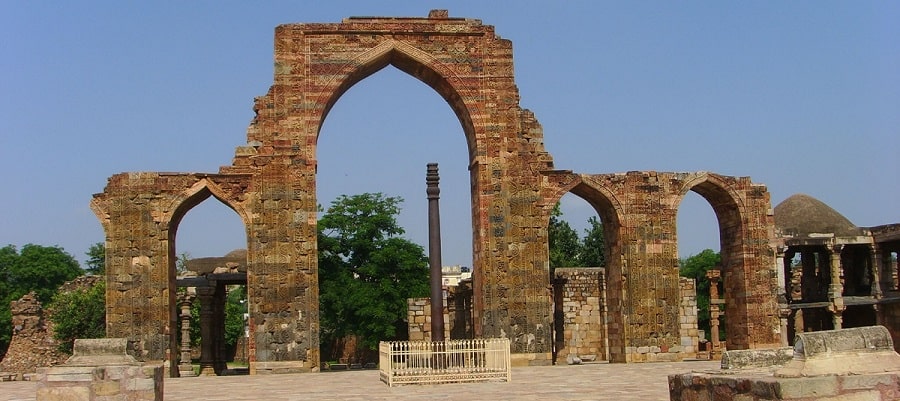
>>>>>>
Kumaragupta I (415-55)
- Kumaragupta was the son and successor of Chandragupta II.
- He was the founder of the Nalanda University.
- Kumaragupta was a worshipper of lord Karttikeya.
- He was also called Shakraditya.
- At the end of his reign, a powerful wealthy tribe called the ‘Pushyamitras’ defeated the Gupta army.
- Successive waves of Hun invasion made the Gupta empire very weak.
- Inscriptions of Kumaragupta
- Bilsad inscription
- Damodar Copper plate inscriptions
>>>>>>
>>>>>>
Skandagupta (455-67)
- He was the son of Kumaragupta I.
- Skandagupta fought successfully against the Huns and saved the empire.
- He adopted the title Vikramaditya.
- In his region, the central control weakened and local governors became feudatory kings with hereditary rights.
- Inscriptions of Skandagupta
- Junagarh Rock inscription
- Bhitari Pillar
- Indore Stone Pillar
>>>>>>
>>>>>>
Other Gupta Rulers
- The Gupta Empire declined after the death of Skandagupta.
- Many of his successors like Purugupta, Narasimhagupta, Buddhagupta and Baladitya could not save the Gupta empire from the Huns.
- The last recognised king of the Gupta dynasty was Vishnugupta who reigned from 540 to 550 AD.
- By the beginning of the sixth century, the empire had disintegrated and was ruled by many regional chieftains.
>>>>>>
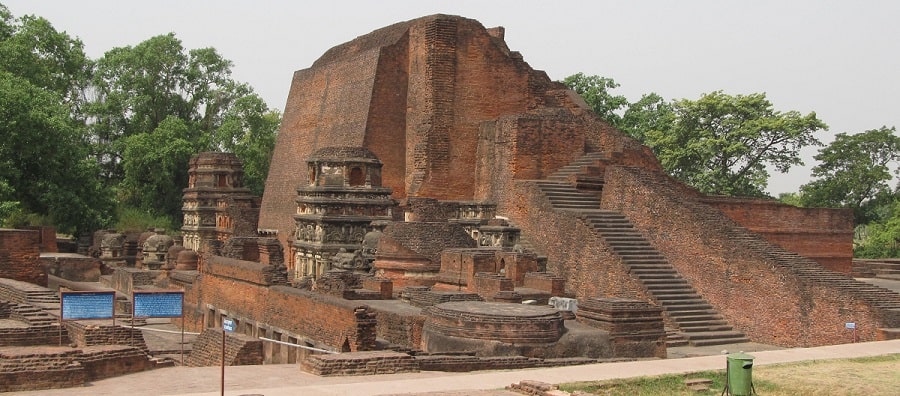
>>>>>
Reasons for Decline of Gupta Empire
- Successive Hun Invasions
- Hun chief Toramana was able to conquer large parts of western India.
- Banabhatta in his Harshcharitra refers to the Huns invasion.
- Rise of Feudatories
- The power of Gupta dynasty was curbed by the rise of feudatories.
- Gradual Decline in Economic Prosperity
- Loss of western Indian ports and foreign trade
>>>>>>
>>>>>>
Administration of Gupta Dynasty
- The Gupta administration was decentralized in nature and contained many feudatories like local kings and smaller chiefs.
- Feudatories post was hereditary in nature.
- Provinces in Gupta’s period were known as Bhuktis & provincial governors Uparikas.
- King maintained close contacts with provincial administration through a class of officials called “Kumaramatyas” & “Ayuktas”.
- Provinces were divided into districts Vishayas under charge of Vishayapati.
- All foreign affairs were looked after by foreign affair minister known as “Sandivigraha”.
- Villagers were subjected to forced labour called Vishti for serving royal army & officials.
>>>>>>
>>>>>>
Religion & Social Culture
- Brahamans formed the top ladder & receive numerous gifts.
- Brahamanism reigned supreme during Gupta period & had 2 branches mainly, Vaishnavism & Shaivism.
- Vaishnavism was more prevalent (Bhagavatism).
- The Chandalas were untouchables.
- They lived outside the village and had to maintain distance from the upper castes.
- Fahien accounts shows a decline of Budhhism in Gangetic valley but a few Buddhist monks like Vasubandhu were patronised by Gupta kings.
- The status of women deteriorated further in the Gupta period.
>>>>>>
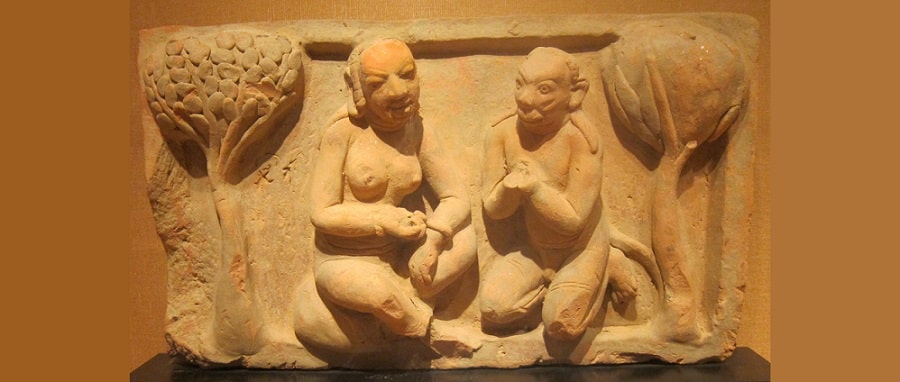
>>>>>>
Literature, Art and Architecture
- The literature was written in Sanskrit in this period .
- The two epics, the Ramayana and the Mahabharata, were compiled in the 4th century.
- The Vishnu Purana, Vayu Purana, and the Matsya Purana were also compiled in Gupta period.
- Some great writers were
- Shudraka – Writer of the play Mrichchhkatikam
- Vishakhadatta – Author of Mudrarakshasa
- Bhasa – Writer of Charudatta
- Vishnusharman – Author of the Panchatantra
- Art of Gupta period was greatly influenced by Buddhism.
- The paintings of Ajanta caves are the finest examples of Buddhist art during Gupta period.
- Indian temple architecture started in the time of Gupta dynasty.
- These temples were made in the Nagara architectural style.
- The sculptures pertaining show a continuation of the Mathura and the Gandhara schools.
- New styles of art also introduced.
- The Bamiyan Buddha sculptures also belonged to this period.
- The Gupta coins are also pieces of art.
- Coins are well designed and meticulously crafted.
>>>>>>
>>>>>>
Science and Technology
- The Gupta period is unparalleled for its achievements in mathematics and astronomy.
- Varahamihira’s Panchsiddhanta, is the earliest dateable text to use zero both as a symbol and a number.
- Aryabhatta
- Father of Algebra and the earliest known astronomer of India.
- The Suryasiddhanta, was also written by Aryabhatta, contains sine tables.
- He was the first to invent zero and to recommend the use of the decimal system.
- He was first to discover that the earth rotates on its axis and estimated of the length of a year.
- Aryabhatta gave scientific explanation of eclipses.
- He laid foundations of trigonometry.
- He gave a very accurate value of pi (π)
- Brahmagupta
- He wrote the Brahmasputasiddhanta (628 CE).
- In this book he hinted at the Law of Gravitation.
- Sushruta
- The famous author of the Sushruta Samhita.
- It deals with surgery.
- Metallurgy also saw technological advancement in Gupta period.
- The iron pillar at Mehrauli, Delhi, standing in the open, and not gathered rust even after 15 centuries.
>>>>>>
>>>>>>
Fa Hien Visit to India
- The famous Chinese pilgrim, Fahien (399-414) visited India during the reign of Chandragupta II.
- He elaborate account of the life of its people in his book ‘Fo–Kyo–Ki’.
- Fa Hien came to India by the land route through Khotan, Kashgar, Gandhara and Punjab.
- He visited Peshawar, Mathura, Kanauj, Sravasti, Kapilavastu, Kusinagara, Pataliputra, Kasi and Gaya among other places.
- He returned by the sea route, visiting on the way Ceylon and Java.
- The main purpose of his visit was to see the land of the Buddha and to collect Buddhist manuscripts from India.
- He stayed in Pataliputra years studying Sanskrit and copying Buddhist texts.
- He refers to the Gangetic valley as the land of Brahmanism.
- Fa Hien mentions the unsatisfactory state of some of the Buddhist holy places like Kapilavastu and Kusinagara.
- He did not mention the name of Chandragupta II.
- Fa Hien was not interested in political affairs and his interest was primarily religion.
>>>>>

